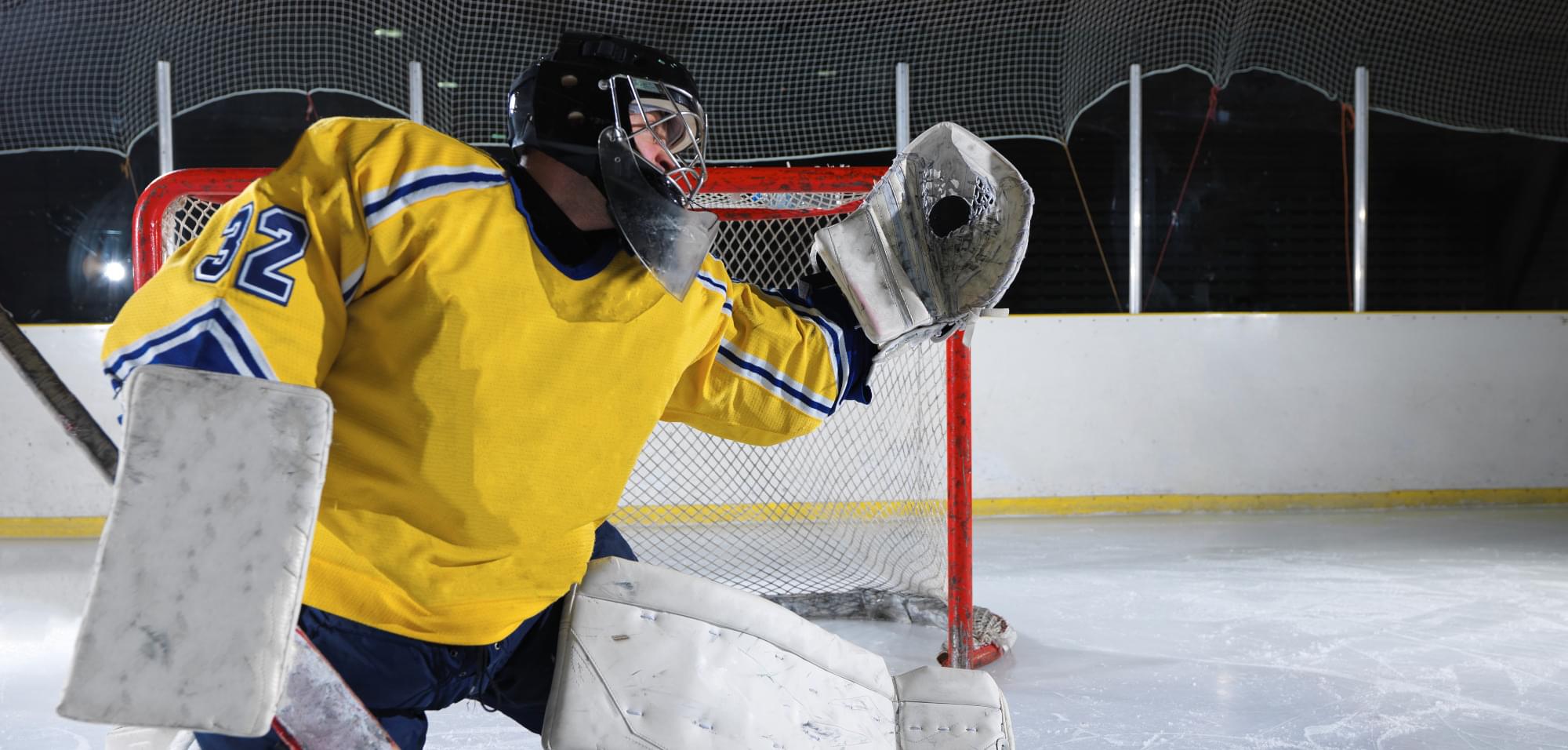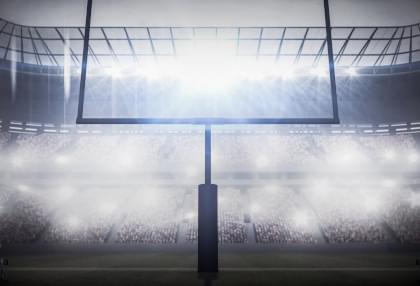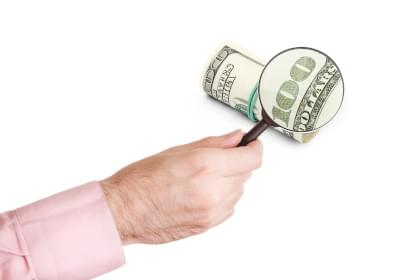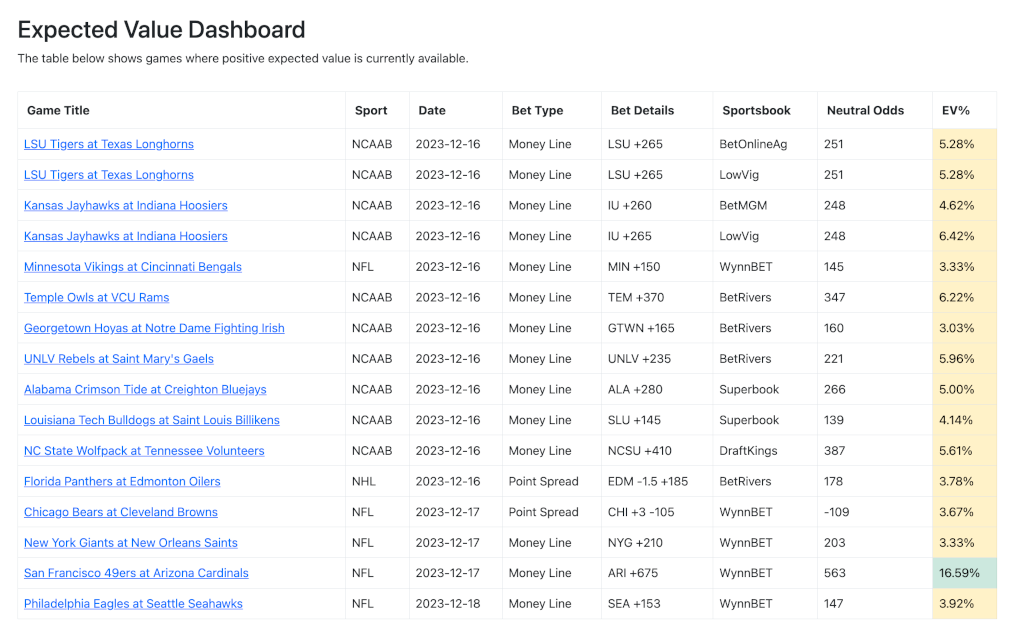While I enjoy placing wagers on various sports, there is no question that I make the most money betting on NHL and MLB games. Since the MLB season recently ended and the NHL season started about a month ago, the focus of this article will be to lay out my strategy for betting on hockey games, but please note that the same concepts apply to baseball. I expect to write an article very similar to this once the next MLB season gets underway.
My strategy for betting on hockey games isn’t complicated at all, but it does require discipline. Since I use the Cappers web application to handicap every game, the process is very quick and easy. You could certainly do it without Cappers, but you would have to know which formulas you want to calculate and it would be a very time consuming process because you would have to find all the data for each team that is required for each formula. One of the benefits you get from using the Cappers platform is that it automatically calculates results from dozens of different sports betting systems at once. Plus, you get AI analysis of every game, along with the latest betting odds and public betting trends. You could pull all this information together on your own, but it would be a very slow process. Cappers brings everything together for you in an efficient manner and drastically simplifies your decision making process.
What I Look For When Making NHL Bets
At a high level, my hockey betting strategy is very simple: I don’t place bets with negative odds. Since Cappers is based in the U.S. I'll be referring to American Odds in this article, but you can convert them to other odds systems easily if needed. When I say "negative odds" I’m referring to any odds that are less than -100, so my strategy is to look for bets with odds that are greater than +100.
When you have negative odds, it means you’re not going to double your money when you win the bet. If you made a $100 bet at -110 odds and you won the bet, your winnings would be $91, meaning the total payout from that bet would be $191. If you wanted to win $100 on a bet with -110 odds, you would have to bet $110. Obviously, if you lose that bet, you would lose the whole $110, and this is where the Sportsbook gets their edge.
In order to bet $100 and double your money, you would need to place a bet at 100 odds. Sometimes this will be written as +100 while other times it will be written as -100, but they’re the same thing. In this case, you’re getting even money odds and can therefore double your money when you win.
When the odds are greater than 100, you will more than double your money when you win the bet. Here are a few examples to illustrate the point: a $100 bet at +110 odds has a total payout of $210, a $100 bet at +150 odds has a payout of $250, and a $100 bet at +250 odds has a total payout of $350. In each case, you’re getting your initial $100 back, plus a profit which is determined by the odds being offered by the sportsbook.
In my experience, I make a lot more money when I focus on finding bets with positive odds than when I place bets with negative odds, and it’s much easier to find these types of odds when betting on hockey and baseball, compared to football and basketball. Let me explain why.
Why this strategy doesn’t work as well with Football and Basketball
There’s no question that football and basketball are more popular sports to bet on than hockey and baseball, but when you compare those sports, one thing immediately stands out. In general, a lot more points are scored in football and basketball games than in hockey and baseball games. Because of this simple fact, betting on football and basketball is heavily driven by point spreads, and the odds for any point spread bet in these sports will always be negative.
Let’s assume that the Dallas Cowboys are playing the New York Giants and the Cowboys are a 7.5 point favorite. If you decide to bet on the Cowboys to cover the spread, the odds will most likely be -110. You might be able to find a sportsbook offering -105 odds, but it’s a guarantee that you will not find a sportsbook offering positive odds for that wager. On the flip side, if you decide to bet on the Giants +7.5 points, it’s still going to be -110 odds.
You could also decide to bet on the total points score going over or under the given line, but those bets will also come with negative odds. The only way to get positive odds on a single bet (meaning no parlays) in a football or basketball game is to pick the underdog to win straight up. This is known as a money line bet. You’re ignoring the point spread and picking a straight up winner for the game.
There’s certainly nothing wrong with taking the money line in a football or basketball game. In fact, those are the bets I’m most likely to place when betting on these sports due to my preference for bets with positive payouts, but it’s tough because you’re always trying to pick upsets. If you’re betting on the money line, the favorite will have negative odds and the underdog will have positive odds.
Due to the immense popularity of football and basketball betting in the United States, the lines are almost always going to be razor sharp. They get this way due to all the action the sportsbooks are receiving on both sides. Obviously there will always be upsets, but being able to pick them at even a 40% success rate, which is usually enough to secure a profit due to the positive odds associated with money line underdogs, is difficult.
When it comes to football and basketball betting, the sportsbooks are able to adjust points spreads and over / under totals while always keeping the odds negative, and again, this is how they get their edge. If every bet you place is at -110 odds, you will need to win more than 52% of your bets just to break even. This might not sound difficult but I promise you, over the long run, it is. If you want to make real profits, you’re shooting for around a 60% win rate, and only a small percentage of people, most of whom are professional gamblers, are able to achieve that type of success on a regular basis.
To sum this section up, sportsbooks are able to keep most football and basketball bets at negative odds (usually -110) and simply adjust the point spread or over / under total as needed when heavy action is coming in on one side. By always keeping the odds negative, they ensure themselves an advantage over the players. If you want to place a bet on these sports with positive odds, and you’re not doing a parlay (meaning you’re picking multiple bets to win), your only option is to pick an underdog to win straight up, without the point spread.
Now that we understand how the sportsbooks get their edge in football and basketball betting, let’s take a look at hockey betting. Remember, these concepts also apply to baseball betting.
What Makes Hockey Betting Different?
Due to the fact that hockey games are lower scoring than football or basketball games, the sportsbooks don’t have the luxury of keeping most bets at negative odds. There simply isn’t very much wiggle room when setting hockey point spreads or over / under totals, so when a lot of action comes in on one side and they need to make an adjustment, they often need to adjust the odds they’re offering.
In hockey betting, we don’t usually use the term "point spread" because they have something called the "Puck Line." Conceptually it’s the exact same thing as a point spread, but the value of the puck line is almost always going to be 1.5 goals. There are occasional games where the puck line will be set at 2.5 goals, but you won’t see this very often. For the remainder of this article let’s assume all puck lines are set at 1.5 goals.
Just like other point spreads, the favorite in the game will be -1.5 on the puck line and the underdog will be +1.5. If you bet on the puck line favorite, they will need to win the game by 2 or more goals, and if you bet on the puck line underdog, they can lose by 1 goal and still win the bet.
Most of the time, when you bet on a puck line favorite to win by 2 goals or more, you will receive positive odds from the sportsbook. Occasionally there will be games where one team is so heavily favored that even by giving up 1.5 goals on the puck line the sportsbook still offers negative odds, but if you’re following my system, you will not make those bets.
The opposite is true for puck line underdogs. Since they are getting 1.5 goals on the puck line, and so many NHL games are decided by one goal, the odds for the puck line underdog are pretty much always going to be negative. Therefore, I don’t bet on puck line underdogs.
This exact same concept applies to baseball betting, but there they refer to it as the "Run Line."
Unlike football and basketball, where point spread betting guarantees that we will have to accept negative odds, hockey betting via puck line favorites will quite often give us an opportunity to bet on a favorite while still receiving positive odds.
There are also plenty of opportunities in hockey betting to receive positive odds while playing over / under totals. Due to the low scoring nature of the game, NHL totals are usually set at 6 or 6.5 goals. You will occasionally see totals that go down into the fives or up into the sevens, but those aren’t very common. Once again, since the sportsbooks don’t have much wiggle room when setting their totals, the most common way to make adjustments is to change the odds.
When betting on NHL totals, it’s a guarantee that either the over or the under will have negative odds, and it’s possible that both sides will have negative odds, but it’s also quite possible that one side of the total will have positive odds while the other side has negative odds. This means that when you’re betting on NHL games, you will frequently have the opportunity to receive positive odds from the sportsbook when placing puck line, money line, and scoring total bets!
Why Do I Prefer Bets with Positive Odds?
At the beginning of this article I said my system revolves around placing bets with odds of +100 or better, and by now you may fully understand why that is, but let me break it down a little further. The short reason is that I can afford to win fewer games while still turning a profit, so let’s use some examples to illustrate the point.
Assume I placed two bets for $100 each, and I received +150 odds for both bets. There are three possible outcomes: I lose both bets, I win both bets, or I win one bet and lose the other. If I lose both bets I’m down $200, and if I win both bets, I get my $200 back plus a profit of $300. Obviously, one of those scenarios is much better for me than the other, but the most likely outcome, statistically speaking, is that I will win one and lose the other. In this case, I will still turn a profit of $50 because my winning bet gave me my $100 back plus a profit of $150, and my losing bet cost me $100. My total risk that day was $200 and I turned a $50 profit. I’ll gladly take 25% profits every day for the rest of my life if it’s an option.
Based on this simple math, I frequently like to make bets in pairs because I only need to hit one out of every two to turn a profit. Had both of my bets come with negative odds and I won one out of two, I’d still be losing money. If we assume that both bets had -110 odds and I won one of them, I’d be down $9 at the end of the day.
Remember when I said earlier that if every bet you placed was at -110 odds, you would need to win more than 52% of the games just to break even? Well, if every bet you made was at +150 odds, you only need to win four out of every ten games to break even. Suddenly we have a lot more room for error!
Picking the right Positive Odds
I’m sure some of you have had some doubts pop up in your head while reading this article. After all, negative odds are given to favorites, which are the most likely outcomes, and positive odds are given when an outcome is less likely to happen. If that thought has already crossed your mind, you’re absolutely right and I wouldn’t try to convince you otherwise. A foolish strategy would be to simply pick every bet with positive odds and put your money on them. That would be a great way to go broke.
We’ve got to be more intelligent about which underdog bets we put our money on, and this means we need betting systems and analysis. For me personally, this is where the Cappers web application is so useful. As previously mentioned, there are plenty of other ways to handicap games or calculate system results, but I love the breadth of information, multitude of system results, and time savings I get from the Cappers platform.
What Cappers Provides to NHL Bettors
When you submit the Cappers NHL handicapping form for any game, you’re going to see a variety of sections. First is the Team Info section, which provides helpful links related to both teams, information about their record, and who the probable starting goalies for that game are. Next is the Latest Games section, where you will see the results from the three most recent games for both teams.
One of our most popular features for all sports is the AI Analysis, which is the next section. Here we provide you with the analysis from Betty, our sports betting bot, who we have provided all of the important game details and statistics with. Betty provides detailed analysis about the game, then makes point spread, money line, and over / under recommendations, assuming odds for each of these bets fall within what we have determined to be an acceptable range. While we like making bets with positive odds, we rarely recommend games when the odds are greater than +250 due to their low likelihood of winning.
After the AI Analysis section comes the Team Stats section. Here we have tables showing stats and records for both teams from the current and previous seasons. Next up is our Odds For This Game section, where we show the latest puck line, money line, and over / under odds from the DraftKings, FanDuel, and BetMgm sportsbooks. These odds are updated regularly to ensure accuracy.
Below this are the money line movements graphs, where you can see how the money line odds for both teams have moved over the past several days leading up to this game. I find these graphs very helpful in determining which way the momentum is swinging.
Finally, we get to our Betting System Results section. This is the area that I spend the most time working on and adding new features to. First, we have public betting trends for the puck line, money line, and totals. When looking at the public betting trends it’s important to understand the difference between money and bets. The total amount of money being bet is generally considered to be a prime indicator of where the professional gamblers, or "sharps", are betting, while the total amount of bets are an indication of where the general public, or "squares", are betting. It’s not uncommon to see a large percentage of the money on a bet with a low percentage of the bets on that same side, or vice versa.
Using this data, Cappers calculates results for three betting systems: Fade the Public, Pros and Joes Agree, and Follow the Money. Each of these systems analyzes the money and bet percentages to produce recommendations for puck line, money line, and over / under bets.
The Fade the Public system looks for games where a large percentage of money is being bet while the percentage of total bets is much smaller. While we’re only about a month into the new season, I’m pleased to announce that our Fade the Public PuckLine system currently has a record of 40 - 28, for a profit of 24.46 units. This calculation assumes that you are betting one unit per recommendation. While this system does not have our best total winning percentage, it is our most profitable single NHL system so far this season, mostly because it’s picking good puck line favorites with positive odds. If you can pull off a winning record and combine that with positive odds, you’re going to cash in big time.
The Pros and Joes Agree system looks at the public betting trends to see if a large percentage of money and a large percentage of bets are both being placed on the same thing. Finally, the Follow the Money system just looks at where all the money is going. If it finds a very high percentage of money on a particular side, a betting recommendation is given.
After these public betting trends systems, we have a variety of statistics-based NHL betting systems. The first one is called the Weighted Average system, and it looks at stats for both teams from various seasons to apply a weighted score based on various criteria. We then use that weighted score to make puck line, money line, and over / under bet recommendations.
Next up is the Road Dogs system, which looks for underdogs playing on the road who fall within a specific positive odds range. The idea behind this system is that home ice is often overvalued and you can find underdogs who have gotten hot in their last few games that shouldn’t be as much of an underdog, if at all, as the books are listing them. In these cases, a lot of value can be found on betting these underdogs. This system is a top performer for us during every NHL season.
After the Road Dogs system comes the Scoring Drought system, which is another system that looks specifically at visiting teams. In this case we’re looking for visiting teams who have lost exactly two games in a row (but not more) and scored three or fewer goals in both games. Assuming these criteria are met and the odds fall into an acceptable range, a betting recommendation is given.
Our final NHL betting system is the Over / Under system, which analyzes scoring by both teams during their last five games and uses those statistics to generate its own total for the game. If the system-generated total differs by 0.75 points or more from the total being offered by the sportsbook, a betting recommendation is given.
Since the results of each system are color coded (green for recommendation, yellow for consideration, and red for no play), you can quickly scan through the results to see if any bets are being recommended. If so, you can then dive deeper into the results to see if a play makes sense.
Based on the success rate of these systems, I find that when I make a pair of bets with positive odds on both plays, I am much more likely to win both bets than I am to lose both of them. Going 50/50 is still the most likely outcome, but again, that’s all you need to turn a profit.
Summary
Thanks for sticking with me to the end of this article. I realize a lot of information has been presented, but I wanted to be thorough when explaining my system. To recap everything, my NHL betting strategy is based on only making bets where positive odds are given. Assuming you’re using American odds, this means the odds for your bet are +100 or higher. If you’re using decimal odds, you would need anything at 2.0 or higher, and if you’re using fractional odds you would need anything at 10/10 or higher, like 11/10, 12/10, etc.
I then run the Cappers NHL handicapping form and look for betting recommendations, which appear in green. Although I will sometimes make only a single bet for the day, I usually prefer to pick games in pairs and bet one unit per game. That way I can afford to lose one out of every two and still turn a profit.
Most of the betting systems calculated by Cappers place a lot of importance on recent team statistics and public betting trends. If you’re not using Cappers to find these plays, my recommendation is to look for teams who have started playing really well during their last 3-5 games. You’re trying to find opportunities where the sportsbooks and general betting public have not yet caught onto how good a team is. Whenever possible, try to fade the public and align yourself with the professional sports gamblers.
If a large percentage of bets are on a play but a much lower percentage of money is on that play, be sure to stay away. On the other hand, if a large percentage of money is on a play but the percentage of bets on that play is much lower, it’s definitely worth your consideration, assuming the odds are positive. Also, make sure not to go too high with the positive odds. Very rarely do I make a play at more than +250 odds because it becomes too much of a long shot. I find plays with odds between +120 and +180 to be my perfect range.
I have the greatest success betting NHL games when playing puck line favorites to win by 2 or more goals, and when picking underdogs to win straight up on the road. When a team is an underdog at home, there is probably a good reason for it, so I tend to stay away from those plays unless I have a good reason not to.
I rarely bet on puck line underdogs who are getting points, mostly because you rarely get positive odds in those situations, but they occasionally come up. I also try to stay away from betting NHL totals because they’re very hard to hit in general, but when you’re trying to hit them at positive odds it becomes even harder. I need to have a good reason for making these plays.
I hope that through the course of this article you have seen what kind of value the Cappers platform provides to sports bettors. Once again, the concepts I’ve outlined in this article do not require you to use Cappers when selecting NHL bets, but it definitely helps out. The best part is, you can get an unlimited free trial on the Cappers web app for two weeks! I encourage you to sign up and try it out for yourself. If you decide to cancel before your free trial expires, your card will never be charged.
To be clear, Cappers is not a tout service. We don’t tell you who to bet on and expect you to follow our orders. We also don’t charge nearly as much as they do. Our approach is driven by analytics, artificial intelligence, and formulas. We respect your ability to make your own betting decisions, but want to provide you with the best information possible before doing so.
If this sounds like a good fit for you, I encourage you to start your 3-day free trial today. Here’s to our mutual success!






